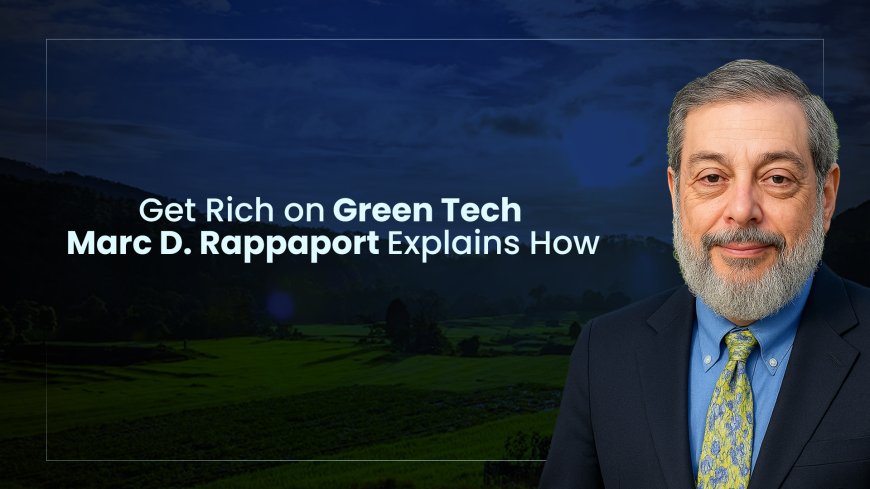Get Rich on Green Tech – Marc D. Rappaport Explains How

Think going green is just about doing the right thing? Think again. Marc D. Rappaport, renewable energy expert and author of On the Verge of Tomorrow, says the green energy movement isn’t just an environmental revolution—it’s a massive financial one. And most people are still focused on yesterday’s winners.
In Rappaport’s view, the gold rush in green tech is far from over. But if you're looking at solar panels or electric cars as your ticket in, you’re already late. The real wealth, he argues, is in the overlooked technologies that haven’t been fully commercialized—or even widely acknowledged.
Beyond Solar and Wind
Solar and wind may dominate headlines, but their growth has created saturated markets, steep competition, and increasingly slim margins. Meanwhile, quietly developing behind the scenes are next-gen renewable technologies that offer lower barriers to entry and far more room to grow.
Rappaport points to dimethyl ether (DME), torrefied biomass, and biochar—three technologies with game-changing potential and under-the-radar investment appeal.
DME: The Fuel Hiding in Forest Waste
DME is a clean-burning, soot-free fuel that can replace diesel in modified engines. It emits far fewer pollutants, and it can be synthesized from waste wood—material that would otherwise decompose or be incinerated.
What makes DME a compelling opportunity is its decentralization. Small-scale facilities can be built almost anywhere there’s biomass. That means local fuel production, fewer dependencies on global oil, and major upside for early investors in DME infrastructure.
“DME could flip the fuel supply chain on its head,” Rappaport notes. “It’s not just clean—it’s disruptive.”
Torrefied Biomass: Cleaner Coal, Without the Coal
The second overlooked gem is torrefied biomass—plant material processed to behave like coal. It burns cleanly, stores well, and most importantly, works in existing coal-fired power plants with minimal retrofitting.
That makes it a realistic short-term solution for utilities under pressure to reduce emissions without abandoning their current infrastructure. For entrepreneurs and investors, it means demand for feedstock, processing plants, and logistics.
“It’s one of the fastest ways to cut carbon without shutting down the grid,” says Rappaport. “And hardly anyone is talking about it.”
Biochar: A Climate Tech Sleeper
Then there’s biochar, a form of carbon-rich charcoal made by heating biomass in the absence of oxygen. It doesn’t just sequester carbon—it also improves soil fertility, retains water, and boosts crop yields.
As carbon markets mature, biochar is earning attention for its ability to store carbon long-term. Farmers are also embracing it as a natural soil amendment. It straddles agriculture and climate tech—and it’s already generating carbon credits.
“This is where sustainability meets profitability,” Rappaport says. “It’s rare, and it’s scalable.”
Follow the Quiet Revolution
Rappaport doesn’t just chronicle these technologies—he sees them as keys to the next phase of global energy. While governments and corporations fight over wind and solar subsidies, the savviest investors are looking elsewhere.
“The energy game is changing fast,” he warns. “The real winners will be those who learn the new rules before everyone else does.”













































